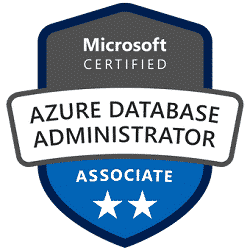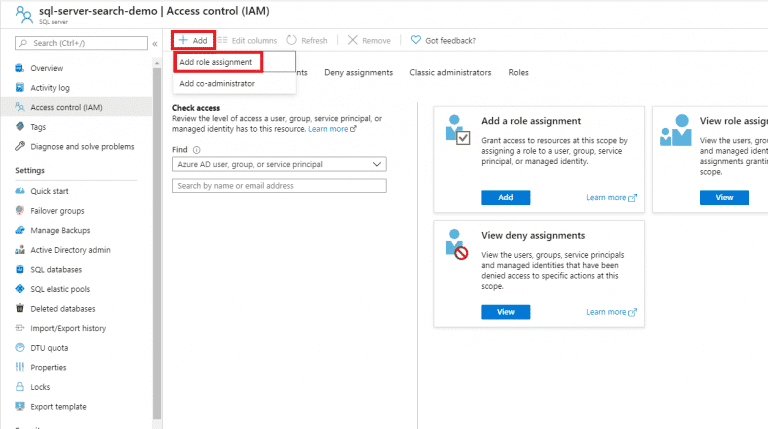Obiettivi | Certificazione | Contenuti | Tipologia | Prerequisiti | Durata e Frequenza | Docenti | Modalità di Iscrizione | Calendario

Il Corso DP-300 Administering Microsoft Azure SQL Solutions è progettato per insegnare ai professionisti IT e ai database administrator come gestire e monitorare le soluzioni basate su Azure SQL, tra cui Azure SQL Database e Azure SQL Managed Instance. Durante il corso, i partecipanti impareranno a sfruttare le diverse funzionalità e servizi di Azure per garantire la disponibilità, la sicurezza e le prestazioni delle soluzioni SQL.
Uno degli obiettivi principali del corso è fornire ai partecipanti una comprensione approfondita delle opzioni di deployment e configurazione disponibili per Azure SQL Database e Azure SQL Managed Instance. Impareranno a gestire e monitorare le risorse di database utilizzando strumenti e servizi di Azure, come Azure Portal, Azure PowerShell, Azure CLI e Azure Monitor.Un altro obiettivo importante del corso è l’ottimizzazione delle prestazioni e la gestione delle risorse di database. I partecipanti apprenderanno come monitorare e ottimizzare le prestazioni del database, gestire gli indici e le query e allocare le risorse in modo efficace per garantire la scalabilità e l’affidabilità delle soluzioni SQL.
Infine, il corso copre le strategie di backup e ripristino, insegnando ai partecipanti come pianificare, implementare e monitorare soluzioni di backup e ripristino per garantire la continuità operativa e la protezione dei dati in caso di guasti o perdite di dati. Il corso contribuisce alla preparazione dell’esame di Certificazione Azure Database Administrator.
Contattaci ora per ricevere tutti i dettagli e per richiedere, senza alcun impegno, di parlare direttamente con uno dei nostri Docenti (Clicca qui)
oppure chiamaci subito al nostro Numero Verde (800-177596)
Obiettivi del corso
Di seguito una sintesi degli obiettivi principali del Corso Administering Microsoft Azure SQL Solutions DP-300:
- Gestire e monitorare soluzioni Azure SQL.
- Sfruttare le funzionalità di Azure per la disponibilità e sicurezza.
- Ottimizzare le prestazioni del database.
- Implementare strategie di backup e ripristino.
- Utilizzare strumenti e servizi di Azure per la gestione del database.
Certificazione del corso
Esame DP-300 Azure Database Administrator; Questo esame valuta la competenza dei candidati nella gestione e monitoraggio di soluzioni database su Azure, inclusi Azure SQL Database e Azure SQL Managed Instance. Si focalizza sull’ottimizzazione delle prestazioni, sulla gestione delle risorse del database, e sull’implementazione di strategie di backup e ripristino. Inoltre, verifica la conoscenza delle pratiche di sicurezza e disponibilità per i database Azure.
Contenuti del corso
Plan and deploy Azure SQL solutions
- Deploy database offerings on selected platforms
- Understand automated deployment
- Apply patches and updates for hybrid and infrastructure as a service (IaaS) deployment
- Deploy hybrid SQL Server solutions
- Recommend an appropriate database offering based on specific requirements
- Evaluate the security aspects of the possible database offering
- Recommend a table partitioning solution
- Recommend a database sharding solution
Configure resources for scale and performance
- Configure Azure SQL Database for scale and performance
- Configure Azure SQL Managed Instance for scale and performance
- Configure SQL Server on Azure Virtual Machines for scale and performance
- Configure table partitioning
- Configure data compression
Plan and implement a migration strategy
- Evaluate requirements for the migration
- Evaluate offline or online migration strategies
- Implement an online migration strategy
- Implement an offline migration strategy
- Perform post migration validations
- Troubleshoot a migration
- Set up SQL Data Sync for Azure
- Implement a migration to Azure
- Implement a migration between Azure SQL services
Configure database authentication and authorization
- Configure authentication by using Active Directory and Microsoft Entra ID
- Create users from Microsoft Entra identities
- Configure security principals
- Configure database and object-level permissions using graphical tools
- Apply principle of least privilege for all securables
- Troubleshoot authentication and authorization issues
- Manage authentication and authorization by using T-SQL
Implement security for data at rest and data in transit
- Implement transparent data encryption (TDE)
- Implement object-level encryption
- Configure server- and database-level firewall rules
- Implement Always Encrypted
- Configure secure access
- Configure Transport Layer Security (TLS)
Implement compliance controls for sensitive data
- Apply a data classification strategy
- Configure server and database audits
- Implement data change tracking
- Implement dynamic data masking
- Manage database resources by using Azure Purview
- Implement Azure SQL Database ledger
- Implement row-level security
- Configure Microsoft Defender for SQL
Monitor resource activity and performance
- Prepare an operational performance baseline
- Determine sources for performance metrics
- Interpret performance metrics
- Configure and monitor activity and performance
- Monitor by using SQL Insights
- Monitor by using Extended Events
Monitor and optimize query performance
- Configure Query Store
- Monitor by using Query Store
- Identify sessions that cause blocking
- Identify performance issues using dynamic management views (DMVs)
- Identify and implement index changes for queries
- Recommend query construct modifications based on resource usage
- Assess the use of query hints for query performance
- Review execution plans
Configure database solutions for optimal performance
- Implement index maintenance tasks
- Implement statistics maintenance tasks
- Implement database integrity checks
- Configure database automatic tuning
- Configure server settings for performance
- Configure Resource Governor for performance
- Implement database-scoped configuration
- Configure compute and storage resources for scaling
- Configure intelligent query processing (IQP)
Create and manage SQL Server Agent jobs
- Manage schedules for regular maintenance jobs
- Configure job alerts and notifications
- Troubleshoot SQL Server Agent jobs
Automate deployment of database resources
- Automate deployment by using Azure Resource Manager templates (ARM templates) and Bicep
- Automate deployment by using PowerShell
- Automate deployment by using Azure CLI
- Monitor and troubleshoot deployments
Create and manage database tasks in Azure
- Create and configure elastic jobs
- Create and configure database tasks by using automation
- Automate database workflows by using Azure Logic Apps
- Configure alerts and notifications on database tasks
- Troubleshoot automated database tasks
Recommend an HA/DR strategy for database solutions
- Recommend HA/DR strategy based on Recovery Point Objective/Recovery Time Objective (RPO/RTO) requirements
- Evaluate HA/DR for hybrid deployments
- Evaluate Azure-specific HA/DR solutions
- Recommend a testing procedure for an HA/DR solution
Plan and perform backup and restore of a database
- Recommend a database backup and restore strategy
- Perform a database backup by using database tools
- Perform a database restore by using database tools
- Perform a database restore to a point in time
- Configure long-term backup retention
- Backup and restore a database by using T-SQL
- Backup and restore to and from cloud storage
Configure HA/DR for database solutions
- Configure active geo-replication
- Configure an Always On availability group
- Configure auto-failover groups
- Configure quorum options for a Windows Server Failover Cluster
- Configure Always On Failover Cluster Instances on Azure virtual machines
- Configure log shipping
- Monitor an HA/DR solution
- Troubleshoot an HA/DR solution
Tipologia
Corso di Formazione con Docente
Docenti
I docenti sono Istruttori Autorizzati Microsoft e in altre tecnologie IT, con anni di esperienza pratica nel settore e nella Formazione.
Infrastruttura laboratoriale
Per tutte le tipologie di erogazione, il Corsista può accedere alle attrezzature e ai sistemi presenti nei Nostri laboratori o direttamente presso i data center del Vendor o dei suoi provider autorizzati in modalità remota h24. Ogni partecipante dispone di un accesso per implementare le varie configurazioni avendo così un riscontro pratico e immediato della teoria affrontata. Ecco di seguito alcuni scenari tratti dalle attività laboratoriali:

Dettagli del corso
Prerequisiti
Competenza di Base nell’ambito dei Database relazionali basati su SQL.
Durata del corso
- Durata Intensiva 4gg;
Frequenza
Varie tipologie di Frequenza Estensiva ed Intensiva.
Date del corso
- Corso Administering Microsoft Azure SQL Solutions DP-300 (Formula Intensiva) – 10/03/2025 – 09:00 – 17:00
Modalità di iscrizione
Le iscrizioni sono a numero chiuso per garantire ai tutti i partecipanti un servizio eccellente.
L’iscrizione avviene richiedendo di essere contattati dal seguente Link, o contattando la sede al numero verde 800-177596 o inviando una richiesta all’email [email protected].


